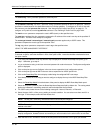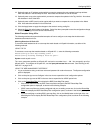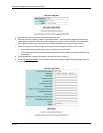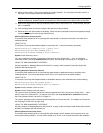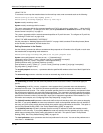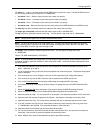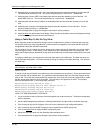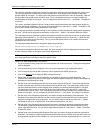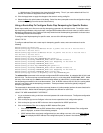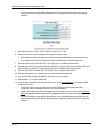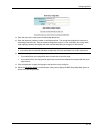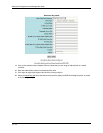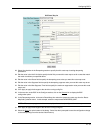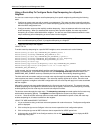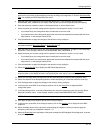
Advanced Configuration and Management Guide
The <half-life> parameter specifies the number of minutes after which the route’s penalty becomes half its value.
The route penalty allows routes that have remained stable for a while despite earlier instability to eventually
become eligible for use again. The decay rate of the penalty is proportional to the value of the penalty. After the
half-life expires, the penalty decays to half its value. Thus, a dampened route that is no longer unstable can
eventually become eligible for use again. You can configure the half-life to be from 1 - 45 minutes. The default is
15 minutes.
The <reuse> parameter specifies how low a route’s penalty must become before the route becomes eligible for
use again after being suppressed. You can set the reuse threshold to a value from 1 – 20000. The default is 750
(0.75, or three-fourths, of the penalty assessed for a one “flap”).
The <suppress> parameter specifies how high a route’s penalty can become before the routing switch suppresses
the route. You can set the suppression threshold to a value from 1 – 20000. The default is 2000 (two “flaps”).
The <max-suppress-time> parameter specifies the maximum number of minutes that a route can be suppressed
regardless of how unstable it is. You can set the maximum suppression time to a value from 1 – 20000 minutes.
The default is four times the half-life setting. Thus, if you use the default half-life of 15 minutes, the maximum
suppression time is 60 minutes.
The following example shows how to change the dampening parameters.
HP9300(config-bgp-router)# dampening 10 200 2500 40
This command changes the half-life to 20 minutes, the reuse threshold to 200, the suppression threshold to 2500,
and the maximum number of minutes a route can be dampened to 40.
NOTE: To change any of the parameters, you must specify all the parameters with the command. If you want to
leave some parameters unchanged, enter their default values.
USING THE WEB MANAGEMENT INTERFACE
1. Log on to the device using a valid user name and password for read-write access. The System configuration
panel is displayed.
2. Click on the plus sign next to Configure in the tree view to expand the list of configuration options.
3. Click on the plus sign next to BGP in the tree view to expand the list of BGP option links.
4. Click on the General
link to display the BGP configuration panel.
5. Select (Next 4) Parameters next to Dampening, to indicate that you want to enable dampening. This
selection also ensures that when you click Apply, the interface applies changes you make to the dampening
parameters in the following four fields.
6. Edit the value in the Dampening Half Life field if you want to change the half life. The half like specifies the
number of minutes after which the route’s penalty becomes half its value. The route penalty allows routes
that have remained stable for a while despite earlier instability to eventually become eligible for use again.
The decay rate of the penalty is proportional to the value of the penalty. After the half-life. expires, the
penalty decays to half its value. Thus, a dampened route that is no longer unstable can eventually become
eligible for use again. You can configure the half-life to be from 1 - 45 minutes. The default is 15 minutes.
7. Edit the value in the Dampening Reuse field if you want to change the dampening reuse parameter. The
dampening reuse parameter specifies how low a route’s penalty must become before the route becomes
eligible for use again after being suppressed. You can set the reuse threshold to a value from 1 – 20000.
The default is 750 (0.75, or three-fourths, of the penalty assessed for a one “flap”).
8. Edit the value in the Dampening Suppress field if you want to change the dampening suppress parameter.
The dampening suppress parameter specifies how high a route’s penalty can become before the routing
switch suppresses the route. You can set the suppression threshold to a value from 1 – 20000. The default
is 2000 (two “flaps”).
9. Edit the value in the Dampening Max Suppress Time field if you want to change the maximum suppression
parameter. The maximum suppression parameter specifies the maximum number of minutes that a route can
be suppressed regardless of how unstable it is. You can set the maximum suppression time to a value from
10 - 70



